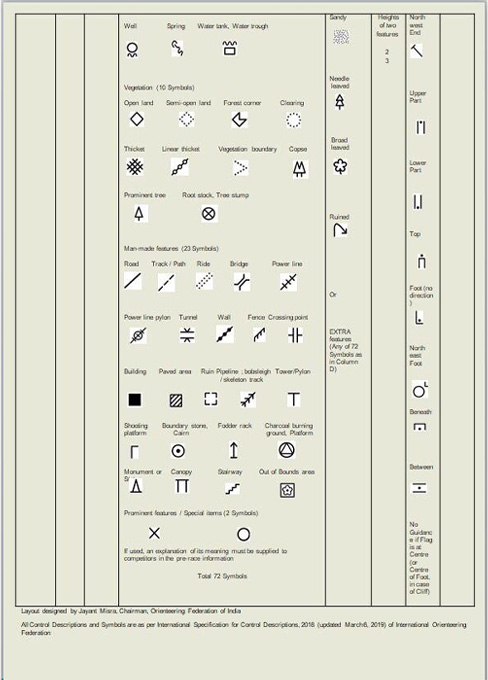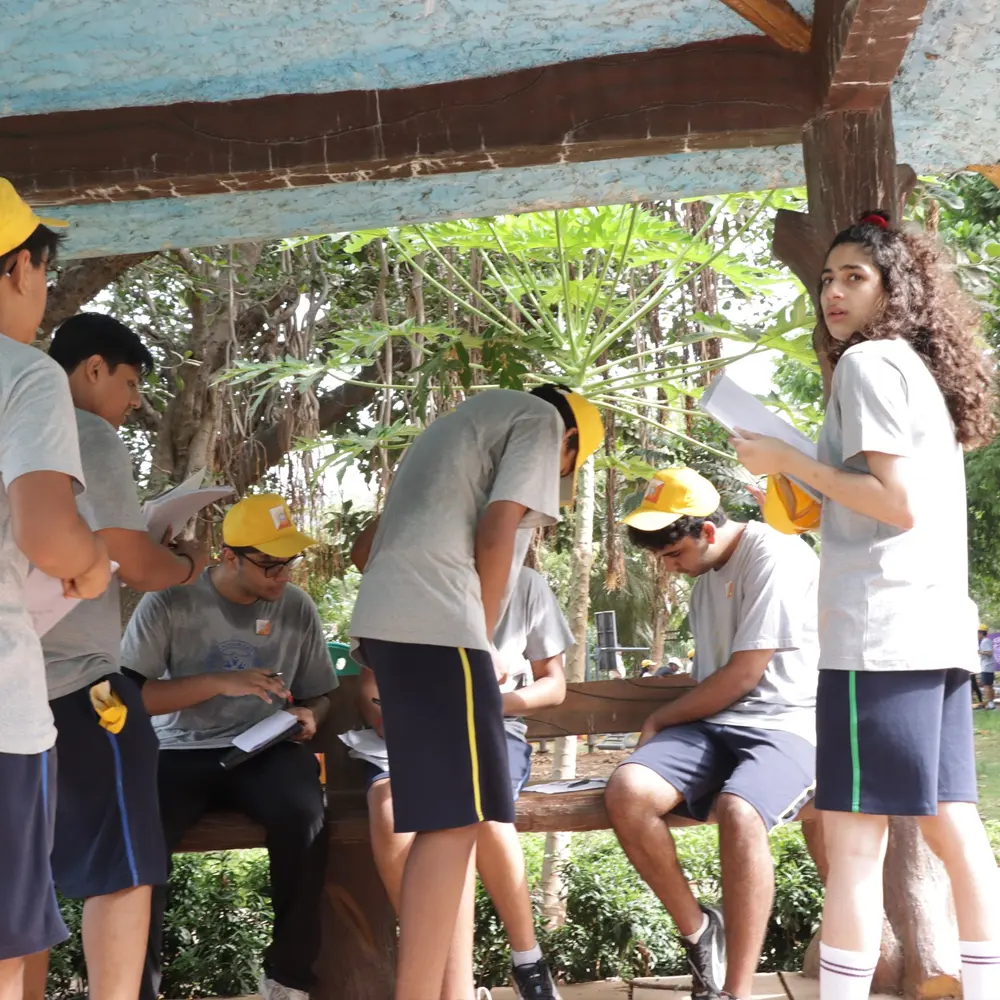Control Descriptions
Decode the Clues, Navigate the Course, Conquer the Challenge.
Decoding the Orienteering Course
Control descriptions are an essential part of Orienteering, providing detailed information about each checkpoint (or control) on the course. They guide participants to the precise feature they need to find and ensure clarity during navigation.

What Are Control Descriptions?
Control descriptions are a set of symbols, codes, or written notes that explain:
The Location of the Control: The exact feature where the control is placed (e.g., a boulder, fence corner, or hilltop).
Control Code: A unique number or letter code on the control marker to confirm you’ve reached the correct checkpoint.
Additional Details: Information about the placement of the control flag (e.g., at the top, bottom, or side of the feature).
Types of Control Descriptions
Pictorial Symbols (IOF Standard):
Used in most competitive events.
Symbols are standardized by the International Orienteering Federation (IOF) and universally recognized.
Examples:
A small solid black Triangle for a boulder.
A solid black Square for a building.
Five very small black Triangles for a boulder field.
Dashes for a path or track.
Text Descriptions:
Commonly used for beginners or recreational orienteers.
Written in plain language, describing the feature (e.g., “East side of a large rock”).
Understanding the Control Descriptions:
There are large number of Control Descriptions which are standardized and are common throughout the world. For clarity and ease of use, the Orienteering Federation of India has devised a 2 page chart in which the entire Control Descriptions appear in the designated columns as per the layout designed by Shri Jayant Misra, the Chairman O.F.I. The Control Description Sheet has 8 columns in which the entire information relating to the Controls and also other information is given. The 2 page O.F.I Chart (which appears on this page), has the 8 columns marked in alphabetical order as A to H, as under:
A: Array or Arrangement in which to visit the controls, ie the sequence.
B: Base number or the Code number of the Control (which can be 31 or any larger number). A shortcode or number is placed on the flag to verify that the correct control is reached.
C: Choice out of similar features. The symbols in this column are used if there are more than one similar features within Control Circle.
D: Description of Control feature. The IOF Control Description Symbols give better visualization on the location of the Control feature given by the Map, so the Orienteer can easily locate the Control Site Any one out of 72 Symbols can appear in this column.
E: Explanation regarding appearance of feature or Extra feature. Any one out of 11 Symbols for appearance or any one of the 72 Symbols mentioned above can appear in column E.
F: Futher information for Feature appears in this column such as Bend, Combinations, Dimensions.
G: Guidance for location of Flag Indicates the specific part of the Feature where the Flag is placed.
H: Human interface eg, First Aid Post, Refreshment Point, Manned Control.

Why Are Control Descriptions Important?
Precision:
They ensure participants can identify the exact location of each Control, especially in complex terrains
Efficiency:
Clear descriptions help Orienteers plan their route and save time during the race.
Universality:
Standardized Symbols allow participants from all regions to compete without language barriers.
Verification:
Control codes confirm that participants are on the correct course.
Tips for Using Control Descriptions
Familiarize Yourself with Symbols
Carefully learn the 8 columns A to H of the Control Description Sheet and the entire Symbols which appear in the 2 page OFI Understanding The Control Description Sheet.
Match Codes Carefully
Always confirm the control code on the flag matches the one in the description.
Use the Map Together
Combine the Control Descriptions with the Map to understand the terrain and flag placement.
Plan Your Approach
Consider the description’s details when deciding the best angle to approach the control.
Control Descriptions in Action
Master the Control Descriptions
Control Descriptions are a vital tool for Orienteers, blending logic with precision to elevate the Orienteering experience. Mastering their use can make the difference between a confident navigation and time lost searching for elusive Controls.
Start exploring their symbols and meanings today—each description is a small step toward conquering your next course!


